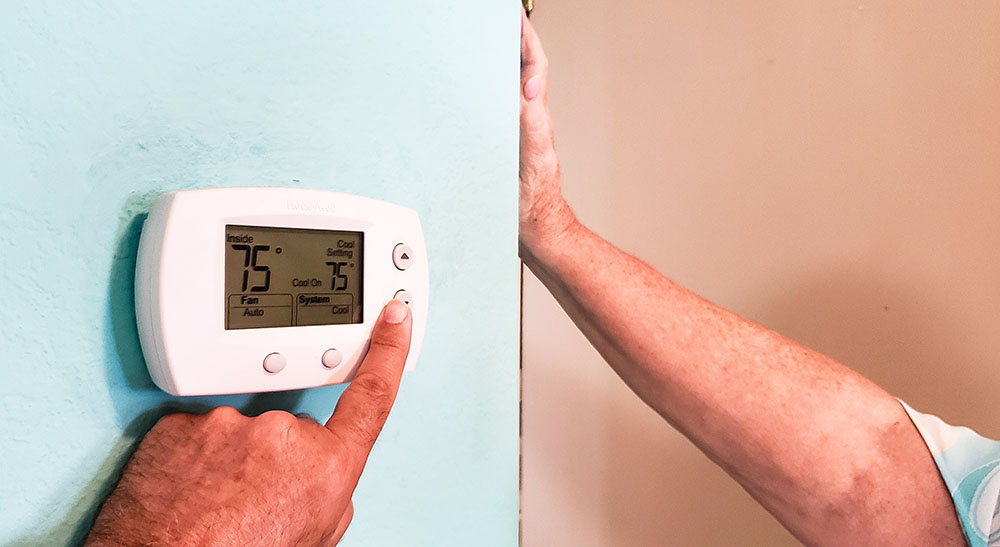

Imagine, if you will, a house. Not just any house, mind you, but an ingenious one. A home that talks to the wind and the sun, that whispers to the very elements of nature. It’s a house that has mastered the art of conversation with its HVAC system. In this narrative, we shall walk through the walls of such a home and unearth the secret to maximizing HVAC system efficiency, thus leading to lower energy bills.
Our journey starts in the icy heart of winter. Picture yourself standing before a roaring fireplace, its flames leaping and dancing to a timeless rhythm. It’s a scene that humankind has known since our ancestors first discovered fire. Heating, the primal element of HVAC, has grown increasingly sophisticated over the ages.
Once, our ancestors would pile on wood, constantly stoking the flames. In our modern world, the idea has remained, but the method has evolved. Now, the flames dance unseen inside efficient furnaces, emitting warmth throughout our dwellings. And in this evolution lies our first lesson in HVAC efficiency: regular maintenance.
You see, a furnace is like a loyal, hardworking friend. It asks for little but gives so much. A little care, a tune-up here and there, replacing filters as they clog up with dust and grime, all go a long way in keeping this friend happy. A happy furnace is an efficient one, using less energy to produce more heat. And so, our energy bills decrease.
As we move from the warmth of the furnace to the fresh air of ventilation, we encounter another key player in HVAC efficiency. Ventilation, in essence, is the soul of an HVAC system, breathing fresh life into our homes. It’s not just about circulating air; it’s about maintaining a balance between indoor and outdoor air quality.
In the past, ventilation was as simple as opening a window or a door. Modern homes, however, rely on more sophisticated ventilation systems like mechanical ventilators and comprehensive ductwork systems. This evolution in ventilation technology gives us another secret to HVAC efficiency: ensuring proper insulation and sealing air leaks.
Think of it like this: you wouldn’t leave a window open while running your air conditioner, would you? It’s a simple principle, but one that’s often forgotten when it comes to ductwork. Sealing ducts and ensuring proper insulation prevent air leaks, thereby reducing the load on the HVAC system. Less load equals less energy consumption, which, in turn, leads to lower energy bills.
We come now to the arena of air conditioning, a marvel of modern engineering. The principle behind air conditioning is deceptively simple, relying on the principles of evaporation and condensation. However, these principles were harnessed in innovative ways to bring us the comfort of cool air during hot summer days.
But let’s not forget that every AC unit, like any hardworking individual, needs a break. Overworking an air conditioning unit can lead to reduced efficiency, necessitating more power for less cooling. That’s where the next secret of HVAC efficiency comes into play: Using programmable thermostats and maintaining an optimal temperature setting.
The advent of programmable thermostats was a game-changer. They allowed us to schedule temperature changes to match our daily routines. This, coupled with maintaining an optimal temperature—a cool 78°F in summer and a warm 68°F in winter—can lead to significant energy savings. Thus, we’re not just creating a comfortable environment; we’re doing it in a way that respects both our wallets and our planet.
The final key to unlocking HVAC efficiency lies in upgrading to energy-efficient systems. This is where our story intertwines with the bigger narrative of environmental stewardship. In an era where climate change and sustainability are paramount, energy-efficient HVAC systems are more than a trend; they’re a necessity. These systems use the latest technologies to minimize energy consumption and reduce greenhouse gas emissions, all while providing superior comfort.
Consider, for instance, the advent of heat pumps. Unlike conventional HVAC systems that generate heat, these units move heat from one place to another, making them incredibly efficient. Geothermal heat pumps go a step further, leveraging the stable temperature of the earth itself to provide heating or cooling. While the upfront cost of these systems might be higher, the long-term energy savings they offer are substantial.
Also emerging on the scene are HVAC systems integrated with smart home technology. These systems learn from your habits and adjust themselves to operate optimally, turning down when you’re away and ramping up just before you come home. These are more than convenience features; they’re intelligent design elements aimed at maximizing efficiency and reducing energy consumption.
Lastly, adopting renewable energy sources, such as solar power, for running HVAC systems can significantly reduce energy bills. Solar-powered HVAC systems, while requiring a significant initial investment, can lead to substantial savings in the long run and contribute towards a sustainable future.
At the end of our journey through this energy-efficient home, we find that the secret to maximizing HVAC efficiency isn’t much of a secret at all. It’s a combination of routine maintenance, smart practices, and embracing new technology—all of which are within our reach.
As we embrace these principles, we do more than just lower our energy bills. We become stewards of our environment. Each degree of adjustment, every filter change, each upgrade to a more efficient system is a step towards a sustainable future—a world where homes talk to the elements not just for their own comfort, but for the well-being of the planet as well.
Thus, the narrative of HVAC is more than a story of temperature control. It’s the tale of human ingenuity merging with nature, creating a symphony of efficiency that resonates with the rhythm of sustainability. And in this symphony, each of us has a part to play, an instrument to tune—a role in the grand orchestra of energy efficiency.
